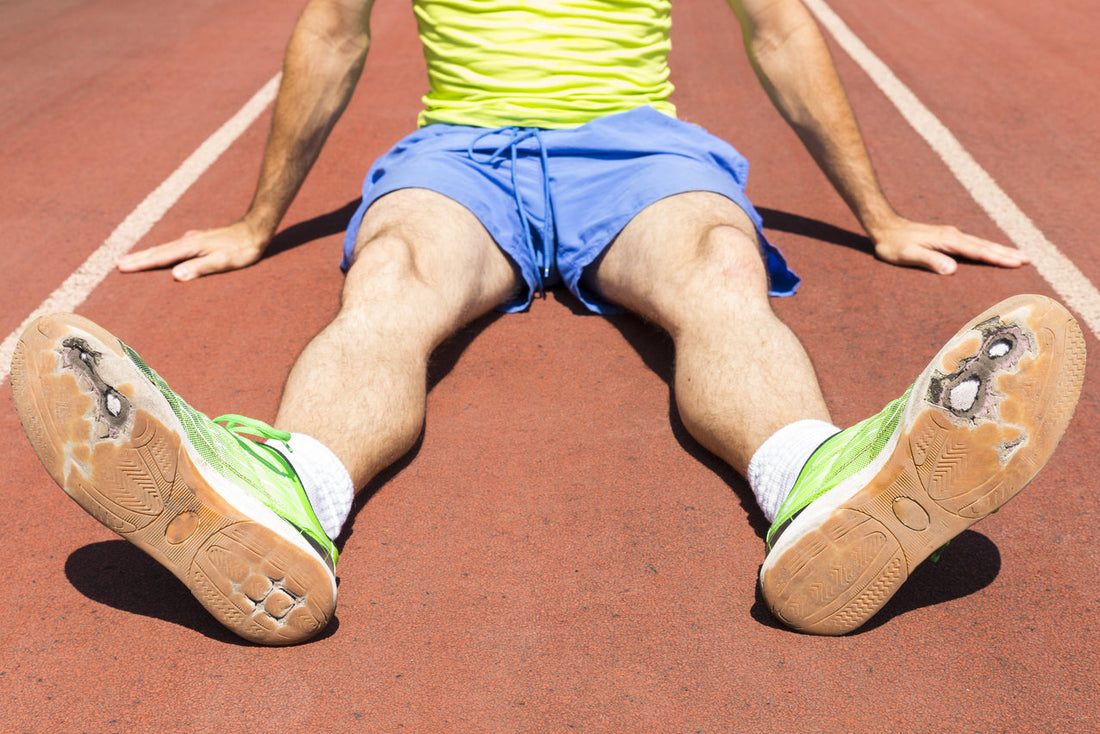Parting with your beloved running shoes can be difficult, but it’s necessary if you want to achieve optimal performance and avoid injury. How often should you replace them?
While this depends on various factors such as how regularly you use them and your running style, it’s generally recommended that you replace your trainers every 500-750km.
If you’re unsure how much distance you’ve clocked up, keep an eye out for signs of wear. Here are the main indicators that it’s time to buy a new pair of running shoes.
Common signs your trainers are nearing their end
The sole
The easiest way to tell how worn your trainers are is by taking a look at the sole. If the tread of your trainers has worn down to a smooth surface, then they’ve probably reached their expiry date. On many running shoes, the sole will change colour once they’ve been worn down to this extent.
Another indicator of shoe health is the shape of the sole. Over time, the sole will change shape according to your running style, body size, and pronation. If your feet are overpronated, for instance, you’ll have more wear on the outside of the heel. This kind of wear, if left unchecked, can increase the risk of injuries such as ankle sprains or plantar fasciitis.
The inside of the heel
Fraying on the inside of the heel is another sign that your trainers are well-worn and might need replacing. This is generally caused by friction from the ankle moving out of place – meaning either that the shoes aren’t correctly sized, or the laces aren’t holding the feet firm enough. Your socks might also be exacerbating the problem – low ankle socks can rub against the inside of the heel and wear it down over time. Choose longer socks, or ones with front and rear lip protection, such as Enertor’s Energy Run Socks.
The Upper
The part of the shoe that covers your foot is called ‘the upper’. After prolonged use it can show signs of wearing around the toes and on the side. This is particularly common amongst runners with flat-feet, which protrude outwards over the sole of the shoe. Flat insoles can help to equally distribute the pressure on the shoe and prevent excessive wear on the sides.
Your Body
Sometimes, the best indicator that you need to change your shoes is your body. If you’re experiencing pain in your feet, ankles, knees, or lower back, it may be that your trainers have worn down to a point where they’re causing you to put excessive stress on certain joints and muscle groups. Upgrading your running shoes may help to prevent an injury, as will specifically designed insoles which significantly decrease the impact felt on the lower half of the body.
How to make your running shoes last longer
Keep them dry
It’s impossible to keep your running shoes dry all the time. Even if you’re not bounding through puddles or running in the rain, your shoes can get wet just through sweat. Keeping them dry avoids the disintegration of fabrics and shoe glue and can make them retain their form for longer. The best way to dry them out after a run is to stuff them with newspaper – it’ll soak up excess water whilst helping to avoid any unpleasant smells later on.
Untie your shoes
Taking your shoes off whilst still tied can damage their heel and reduce the amount of support they give your feet. Rather than kicking them off as soon as you get back from a run, take a couple of minutes to sit down and untie them properly.
Store them correctly
The same logic applies to how you store your running shoes. Burying them under piles of other, heavier shoes may crush the uppers and damage their integrity.
It’s important to know when to ditch your running trainers and upgrade to a new pair. Running in shoes that have been worn down to the bone is not only uncomfortable but can put you out of action through injury. Be sure to regularly check your shoes for signs of wear and change them up if required.
Whether your running shoes are brand-new or are well-worn, you’d benefit from Enertor’s insoles. Designed alongside professional athletes over 20 years, our insoles significantly reduce the impact felt on the lower body and help you to reach peak performance. Check out what other athletes, including Usain Bolt, have to say about them.

